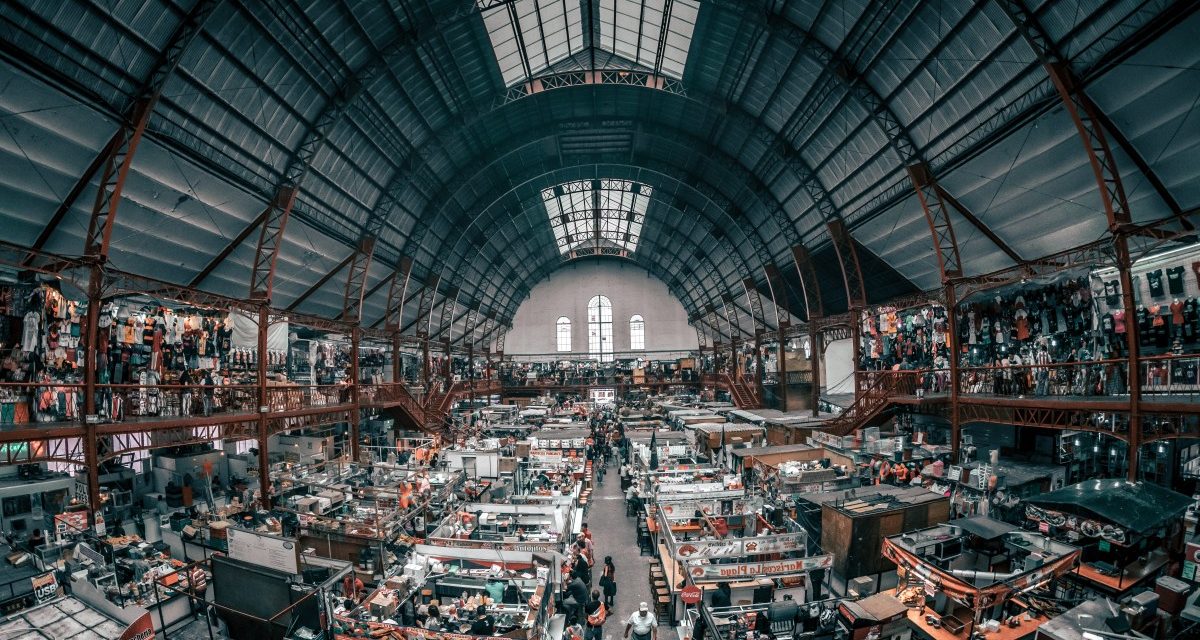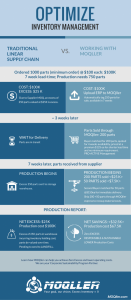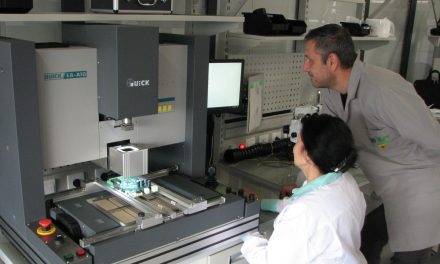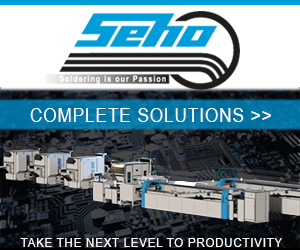A Circular Supply Chain: Better for Your Business and Our Planet

By Margaret Au, Co-founder and COO, MOQller, Inc.

With a circular supply chain, businesses reallocate useful new inventory for a productive purpose, breaking the traditional model of “take, make, and throw away the excess.”
Causes and Consequences of Excess Inventory
Ideally, your business would get exactly what it needs to meet production goals, with no shortage or waste. Unfortunately, a number of factors result in surplus parts. One is that suppliers often demand substantial lead times, typically measured in months. Sometimes market needs change, and the forecasts based on past performance prove inaccurate (e.g. Apple iPhone production forecasts cut by 50% last year). Even if your business can accurately estimate exactly how many pieces it requires, it often is forced to order far more than it will use because of the supplier mandated MOQ (minimum order quantity).
The resulting excess inventory is a drain on your resources, tying up finances, storage space, and manpower. Also, the longer you keep the unused supply, the more likely it is to depreciate in value or even become altogether unsellable. At that stage, it becomes known as E&O (excess & obsolete). Gregory Tashjian, Managing Partner, Inventory Management Partners, LLC, observed here that “between 5 percent and 20 percent of electronic components end up in the E&O category.”
That amounts to significant losses, because businesses typically recoup only up to 5 percent of their purchase price when reselling E&O components. Sometimes, they are not sold as whole components but broken down to salvage any remaining scrap value. However, as The Global E-waste Monitor 2017 points out, it is unusual to recover all of the value of these metals, because they are “easily lost due to imperfect separation and treatment processes.”
A more serious problem is that the excess electronics and their component parts end up as e-waste in landfills, posing a serious threat to the planet. We’re now on a course to hit “52.2 million metric tonnes, or 6.8 kg/inh, by 2021” (Global E-waste Monitor 2017). According to a report published by the World Economic Forum, if e-waste is not curbed, it will reach “120 million tonnes annually” by 2050. Only 20 percent of that is likely to be safely recycled, as most recycling processes fall short of environmental standards.
Shifting the Model to Curb E&O and Promote Sustainability
In the past, without a way to connect directly with other businesses with which to split their minimum order purchases, an EMS could only sell whatever excess parts a broker would buy and dispose of the rest as e-waste. The downside for sellers is getting only cents on the dollar, and the downside for buyers is that they either have to meet the MOQ or pay high broker costs to remedy part shortages.
But now there’s an alternative to losses incurred by excess inventory, e-waste, or the unfavorable pricing and terms offered by brokers. A digitally-disruptive model that reinvents the supply chain ecosystem solves the problem of excessive orders resulting from MOQ and offers shorter lead times for secondary buyers. That’s what the MOQller platform delivers. It enables businesses to effectively split an order to maximize efficiency, limit loss, and eliminate e-waste through the power of sharing.
The concept of a “sharing community” offers an innovative solution for supply chain problems. As explained in Seven Ways a Digital Supply Chain Will Improve Your Business, digital connections between trading partners enable companies to become more agile, getting just what they need for their production goals when they need it: “This type of digital connection allows for the more rapid handover of goods through the supply chain, leading to greater efficiencies.”
The MOQller platform solves the problem of excess inventory resulting from suppliers’ MOQ requirements in two ways:
- Businesses that have ordered more than they need can now be connected with buyers who will pay them closer to market price for their extra inventory – much more than they can get from a broker.
- Businesses that need to quickly amend part shortages or whose needs fall short of standard MOQ can now buy parts at the quantity they need with shorter lead times and at reasonable market prices.
With the MOQller platform, businesses can reduce excess inventory and operating costs, accelerate lead time, and improve relationships between suppliers and customers. Together, these benefits enable businesses of any size to improve their own bottom line while contributing to the welfare of the environment by promoting sustainable business practices.
Sustainability Is Key to Success
In his Gartner 2019 interview, Mark McArthur, Managing Director of The Alpega Group in North America, links sustainability and new technology in the drive to remain competitive. “Digitalization of logistics and supply chains isn’t the future; it’s already here,” McArthur says. “Organizations that don’t embrace current and emerging technologies across their transportation, warehousing and supply chain operations won’t be able to compete.” He goes on to cite the strong trend toward sustainability goals among companies from both corporate and supply chain perspectives.
The Global E-waste Monitor 2017 puts it this way: “it is necessary to overcome the inefficient ‘take-make-dispose’ economic model and adopt the circular economy system which aims to keep the value in products for as long as possible and eliminate waste.”

To learn more about the potential in digitally-enabled circular supply chains, visit MOQller












